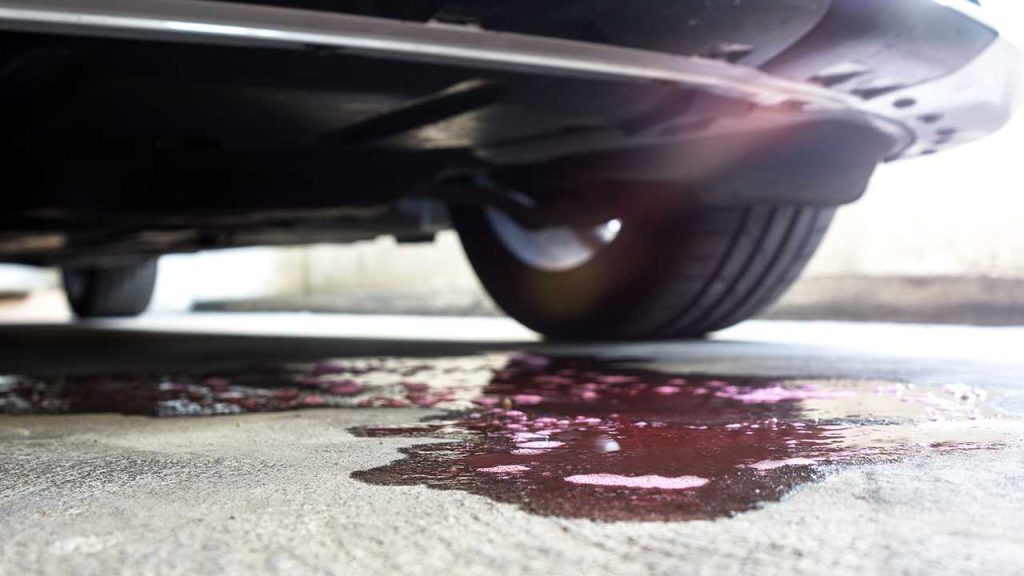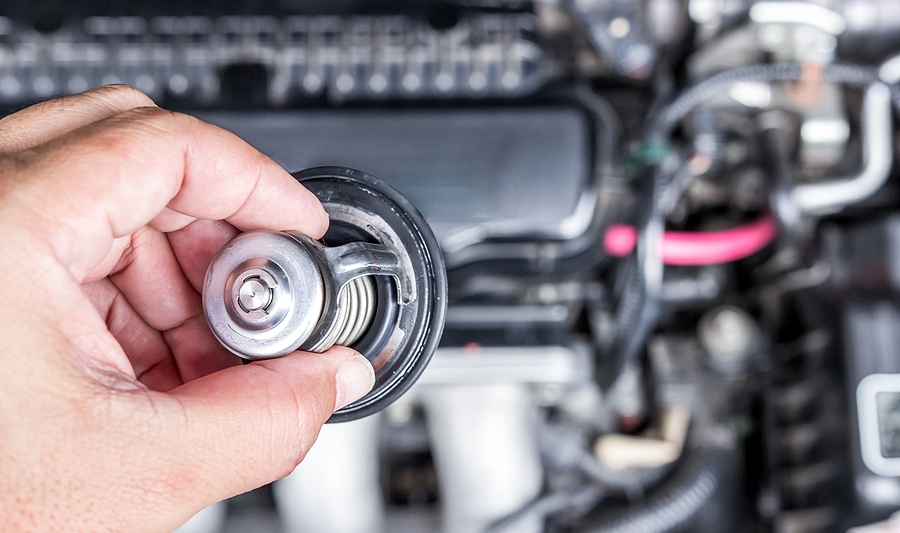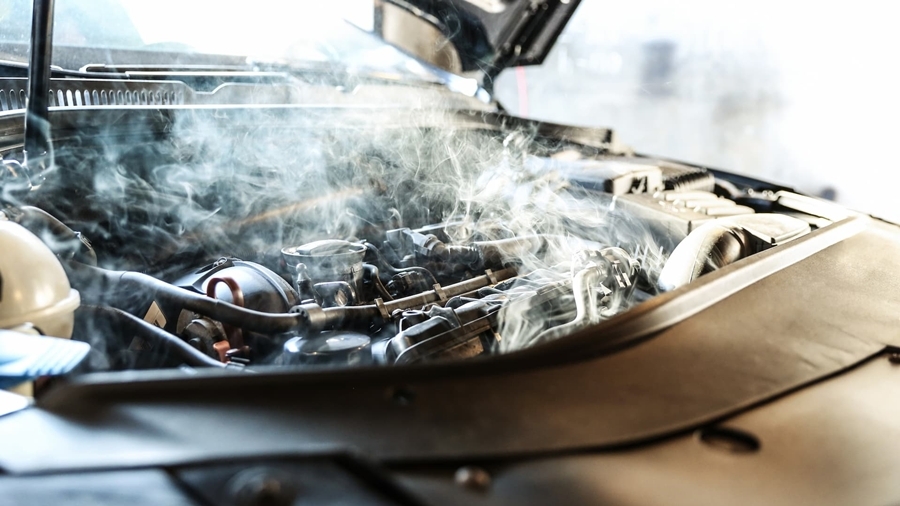Sometimes, peeking under your car might surprise you with colorful puddles. These leaks can actually give you a lot of info about your engine’s condition. By knowing what the colors of radiator fluid leaks mean, you can catch problems early and avoid expensive repairs.
Checking your coolant color regularly isn’t just about keeping your car running well. It helps you spot potential issues before they become major headaches. Understanding what different leak colors indicate can save you money and keep your engine in great shape.
Table of Contents
What Is Radiator Fluid and Its Role in Vehicle Cooling Systems
Overview of Coolant Composition
Coolant, also known as radiator fluid or antifreeze, is basically water mixed with special chemicals. These include antifreeze compounds like ethylene glycol or propylene glycol. Additives are thrown in to stop corrosion and boost heat transfer.
Also read: 8 Alarming Symptoms of a Blocked Radiator Every Driver Must Know
There are various types of coolants based on their ingredients. Ethylene glycol is common, but some cars prefer propylene glycol because it’s less toxic. The color of the mixture often shows which type you’re using.
Functions of Coolant in Engine Performance
Coolant keeps your engine from overheating or freezing. It flows through the engine, soaking up heat and letting it out via the radiator. This process prevents overheating in summer and freezing in winter.
Coolant also stops itself from boiling over or freezing solid. Plus, it protects engine parts like the water pump and hoses from rust and corrosion.
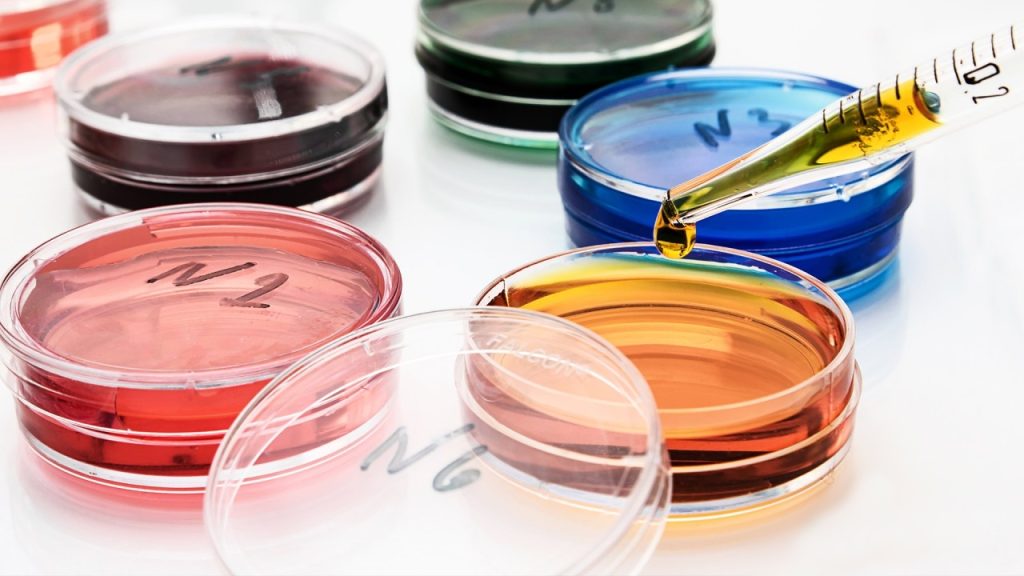
Engine Coolant Colors
Understanding engine coolant colors is essential for proper vehicle maintenance and preventing costly engine damage. While modern vehicles use various coolant formulations, each typically identified by distinct colors, it’s crucial to understand that these engine coolant colors serve as general indicators rather than definitive specifications.
This comprehensive chart breaks down the most common engine coolant colors you’ll encounter, from traditional green coolants used in older vehicles to specialized purple formulations for European cars. Whether you’re dealing with orange Dex-Cool, yellow Ford Motorcraft, or blue Honda coolants, knowing what these engine coolant colors represent can help you make informed decisions about your vehicle’s cooling system maintenance.

Common Radiator Fluid Leak Colors and Their Significance
Green Coolant
Green is the classic coolant color. It’s popular because it’s cheap and lasts a long time. Over time, green coolant can turn brown or murky, indicating contamination or aging.
Green coolant leaks might mean corrosion inside the radiator or split hoses. It’s often a sign that the coolant needs replacing or the system needs a check-up. If you see bright green liquid under your car, it’s time to get it looked at.
Blue and Yellow Coolant
Blue and yellow coolants are less common but used in specific vehicles or brands. They are often silicate-free formulas designed for particular engine types.
A leak involving blue or yellow coolant might indicate a unique additive package. It requires special attention, as mixing different coolants can cause clumping and reduce effectiveness. If you see these colors leaking, get a professional to check the system.
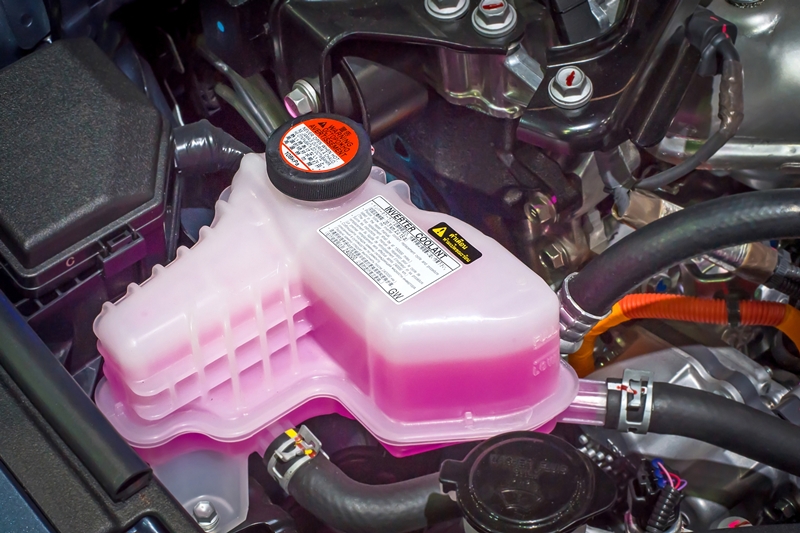
Orange, Red, Pink Coolant
Many newer cars use coolants that last longer and are often orange, red, or pink. They can last up to 5 years or 150,000 miles according to the manufacturer. However, it is best to check the coolant on a regular basis and replace it as necessary.
If you spot a leak of orange or red coolant, it might mean the fluid has broken down or mixed with other chemicals. Sometimes, it points to incompatible coolants or internal seal failure. Keep an eye on these colors, especially if you’ve recently changed or topped off the coolant.
Unusual or Uncommon Coolant Colors
Colors like purple, brown, or even black are signs of trouble. Brown or black indicates contamination by oil or dirt. Purple may showcase contaminated or degraded coolant. These unusual colors often mean coolant has mixed with other fluids or has been exposed to extreme heat, causing it to break down.
Leaking fluids with odd colors can damage your engine. Keep an eye out for these signs and act fast.
Diagnosing Coolant Leak Color and Its Underlying Causes
How Coolant Color Changes Over Time
Coolant naturally oxidizes and picks up dirt as it ages, changing color. It’s normal for fresh coolant to be bright and vibrant. A dull, dark, or sludgy hue signals it’s time for a change.
Chemical reactions and contamination can also alter coolant color. Regular inspections help you catch these shifts early.
Troubleshooting Engine Coolant Colors: What Your Vehicle Is Telling You
Understanding engine coolant colors and their meanings is crucial for maintaining your vehicle’s health. When engine coolant colors change unexpectedly, they often signal underlying problems that require immediate attention. This comprehensive guide helps you decode what different engine coolant colors indicate and when to take action.
Critical Warning Signs in Engine Coolant Colors
Dark Brown or Rust-Colored Coolant
When engine coolant colors shift from their original bright hue to dark brown or rust, internal corrosion is actively damaging your cooling system. This dramatic change in engine coolant colors indicates metal components are deteriorating.
Immediate Actions Required:
- Stop driving if the color change is severe
- Inspect for metal particles in the coolant reservoir
- Schedule professional diagnosis within 24 hours
- Document the color change with photos for your mechanic
Root Causes:
- Expired coolant that hasn’t been serviced in years
- Incompatible coolant types mixed together
- Failed system components allowing metal contamination
- Air pockets causing accelerated oxidation
Milky White or Foamy Coolant
Among all engine coolant colors, milky white represents the most serious emergency. When engine coolant colors turn milky or foamy, oil contamination has occurred, typically from head gasket failure.
Emergency Response:
- Stop driving immediately – continued operation can destroy your engine
- Check oil dipstick for coolant contamination
- Look for white exhaust smoke
- Call for professional assistance rather than driving to a shop
Associated Warning Signs:
- Engine overheating despite adequate coolant levels
- Sweet smell from exhaust pipes
- Rough idle or engine misfiring
- Rapid coolant loss without visible leaks
Jet Black Coolant
Black represents the most contaminated state among engine coolant colors. When engine coolant colors turn completely black, multiple system failures have occurred simultaneously.
Critical Actions:
- Do not operate the vehicle under any circumstances
- This indicates catastrophic cooling system damage
- Prepare for extensive repairs including possible engine replacement
- Contact emergency roadside assistance
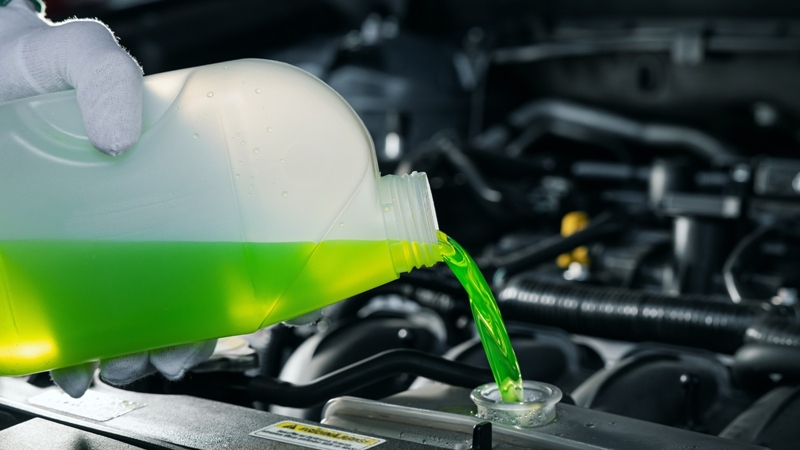
Common Engine Coolant Colors Change Scenarios
Traditional Green Coolant Degradation
Green remains one of the most recognizable engine coolant colors in older vehicles. As green engine coolant colors fade to dark green or brown, replacement becomes necessary.
Progressive Changes:
- Bright green → Dull green (normal aging after 18-24 months)
- Dull green → Dark green (replacement needed within 6 months)
- Dark green → Brown (immediate replacement required)
Maintenance Timeline:
- Check engine coolant colors monthly
- Replace every 2-3 years or 30,000 miles
- Flush system completely when changing
Orange and Red Coolant Issues
Orange and red represent extended-life formulations among engine coolant colors. When these engine coolant colors begin fading or changing, chemical breakdown has begun.
Typical Progression:
- Bright orange/red → Pale orange/pink (additive depletion)
- Pale colors → Brown tinting (contamination beginning)
- Significant darkening → Immediate replacement needed
Professional Recommendations:
- Test pH levels when engine coolant colors begin fading
- Replace coolant even if mileage intervals haven’t been reached
- Never extend service intervals based on appearance alone
Blue and Yellow Coolant Contamination
Blue and yellow represent specialized formulations among engine coolant colors. Changes in these engine coolant colors often indicate contamination from incompatible products.
Warning Signs:
- Blue coolant turning purple or gray
- Yellow coolant becoming green or brown
- Any gel-like consistency regardless of color
- Floating particles in previously clear coolant
Contamination Identification by Engine Coolant Colors
Oil Contamination Indicators
When engine coolant colors show rainbow sheens or milky consistency, oil contamination has occurred. These changes in engine coolant colors require immediate professional attention.
Visual Indicators:
- Rainbow film on coolant surface
- Creamy or milky appearance
- Foam formation on reservoir surface
- Thick, syrupy consistency
Metal Contamination Signs
Rust-colored changes in engine coolant colors indicate metal corrosion within the cooling system. These alterations in engine coolant colors signal component failure.
Identification Methods:
- Magnetic test for iron particles
- Visual inspection for floating debris
- Coolant pH testing
- Professional system pressure testing
Temperature-Related Engine Coolant Colors Changes
Overheating Damage Assessment
Extreme heat can permanently alter engine coolant colors through chemical breakdown. Post-overheating engine coolant colors often appear darker or contain particles.
Heat Damage Indicators:
- Any darkening after overheating incidents
- Burnt smell accompanying color changes
- Thick consistency development
- Visible particle formation
Recovery Actions:
- Complete system flush required
- Coolant replacement regardless of service interval
- Comprehensive cooling system inspection
- Documentation for warranty claims
Emergency vs. Routine Engine Coolant Colors Issues
Immediate Action Required
Certain engine coolant colors changes demand immediate vehicle shutdown to prevent catastrophic damage.
Stop Driving Situations:
Milky or foamy coolant (oil contamination)
Jet black coolant (severe contamination)
Heavy particle contamination
Rapid color change with overheating
Schedule Service Soon
Some engine coolant colors changes allow continued driving with prompt service scheduling.
Service Within Days:
Gradual darkening over time
Minor particle contamination
Slight color fading
Coolant approaching service interval
Monitor Closely
Minor variations in engine coolant colors may indicate normal aging or seasonal changes.
Continued Monitoring:
Subtle color variations
Coolant near replacement schedule
Minor consistency changes
No accompanying symptoms
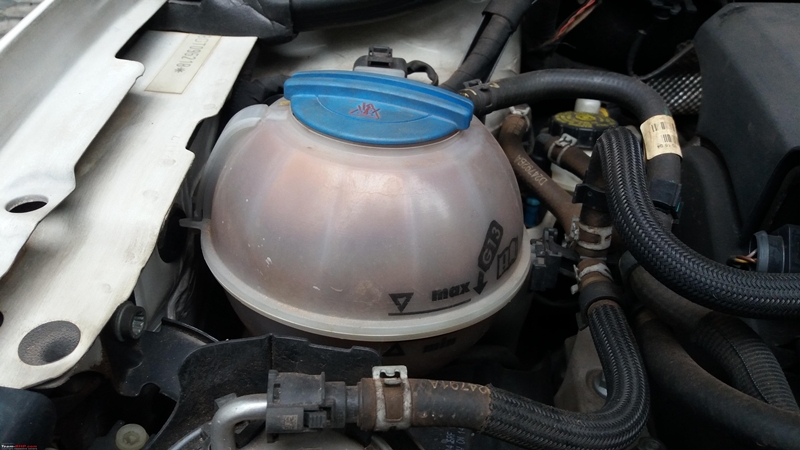
DIY Engine Coolant Colors Assessment
Visual Inspection Techniques
Regular monitoring of engine coolant colors helps identify problems early. Proper engine coolant colors assessment requires systematic observation.
Monthly Inspection Protocol:
- Check engine coolant colors when engine is completely cool
- Compare current appearance to fresh coolant samples
- Document any changes with dated photographs
- Note consistency, smell, and particle presence
- Record findings for maintenance tracking
Simple Testing Methods
Basic tests can help assess engine coolant colors and condition without professional equipment.
Paper Towel Test:
- Dip clean white towel into coolant reservoir
- Examine stain patterns and colors
- Clean, bright stains indicate good condition
- Dark stains or multiple colors suggest contamination
Consistency Evaluation:
- Normal coolant flows like water
- Thick or syrupy consistency indicates problems
- Chunky or lumpy texture requires immediate attention
- Foamy surface suggests contamination
Prevention and Maintenance
Proactive Engine Coolant Colors Monitoring
Regular observation of engine coolant colors prevents major system failures. Consistent engine coolant colors monitoring saves money and prevents breakdowns.
Monitoring Schedule:
- Weekly visual checks during routine maintenance
- Monthly detailed inspections with documentation
- Seasonal system evaluations
- Pre-trip inspections for long journeys
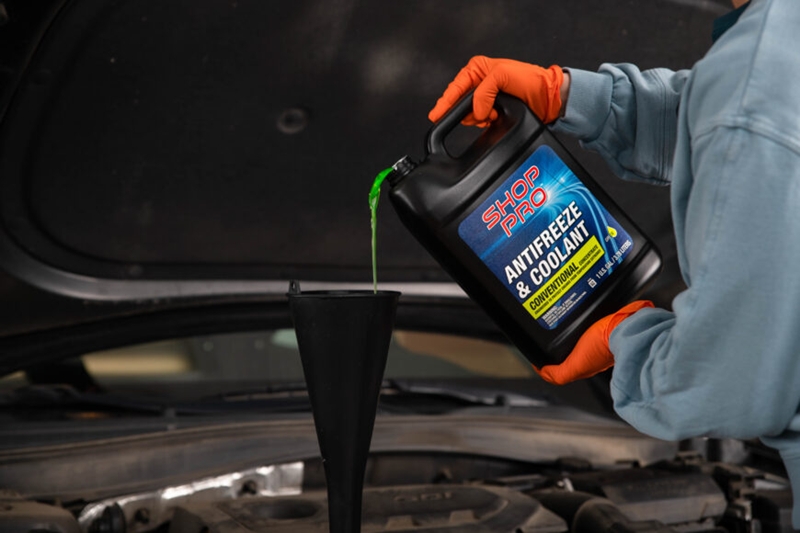
Professional Coolant Service
While DIY monitoring of engine coolant colors helps identify issues, professional service ensures proper system maintenance.
Service Recommendations:
- Annual cooling system inspections
- Coolant testing every 6 months
- Complete system flushes per manufacturer schedules
- Professional diagnosis for any color changes
Understanding engine coolant colors and their significance empowers vehicle owners to maintain their cooling systems effectively. Regular monitoring of engine coolant colors, combined with prompt professional service when needed, ensures reliable vehicle operation and prevents costly repairs. Remember that engine coolant colors serve as your vehicle’s early warning system – pay attention to what they’re telling you.
Also read: Radiator Fan Not Working: 5 Expert Tips to Save Your Engine
Impact of Leak Location on Color and Appearance
Leaks from different parts show different colors and textures. Leaks from hoses often look clear or of the coolant color. Hoses near the engine can mix coolant with oil, creating strange hues. Gasket leaks may release oil and coolant together, changing the leak’s appearance.
Additionally, the surrounding environment can influence the appearance of leaks. For instance, if a leak occurs near dirt or debris, it may appear darker or more contaminated due to the accumulation of particles. This can make it challenging to identify the true nature of the leak. Understanding the context and location of a leak is essential for accurate diagnosis and repair.
Practical Tips for Vehicle Owners
How to Inspect Coolant Leaks and Their Colors
Start with a visual check under the front of your vehicle. Look for pools or drips of liquid. Clean the area and watch for new leaks. Using a UV dye mixed with coolant can help you spot leaks with a UV flashlight.
When and How to Flush or Replace Coolant
Experts recommend flushing your cooling system every 2-5 years or as specified. Flushing removes dirt, debris, and old coolant, restoring cooling efficiency. Always follow the manufacturer’s instructions when adding or changing coolant.
DIY Troubleshooting vs. Professional Help
A small, clear leak might be manageable on your own. But if you see unusual colors or extensive leaks, get professional help. A mechanic can run tests to find leaks, diagnose problems, and avoid further damage.
FAQ: Engine Coolant Colors
-
Can I mix different colored engine coolant colors together?
No, never mix different coolant types or colors. Mixing incompatible coolants can cause chemical reactions that create gel-like substances, reduce cooling efficiency, and potentially damage your engine’s cooling system.
-
What happens if I use the wrong color coolant in my car?
Using the wrong coolant type can lead to corrosion, seal damage, water pump failure, and expensive engine repairs. Some coolants contain additives that can react negatively with your engine’s materials.
-
Is green coolant always the same formula regardless of brand?
No, while green is traditionally associated with IAT coolant, different manufacturers may use green for different formulations. Always check the coolant specification rather than relying on color alone.
-
How do I know which coolant color my car needs?
Check your owner’s manual for the specific coolant type (IAT, OAT, or HOAT) and brand recommendations. You can also look at what’s currently in your radiator, but verify compatibility before adding more.
-
Why are there so many different coolant colors?
Different colors help manufacturers and mechanics quickly identify coolant types and avoid mixing incompatible formulations. Each color typically represents different additive packages
-
Does coolant color fade over time?
Yes, coolant colors naturally fade and become duller as they age. Fresh coolant should be bright and vibrant, while old coolant often appears murky or faded. This color change indicates the coolant’s additives are breaking down and it may need replacement.
-
Can I tell coolant condition just by color?
While color is a good initial indicator, it’s not the only factor. You should also check for consistency, debris, oil contamination, and rust particles. A coolant can maintain its color but still be contaminated or chemically degraded.
-
What if my coolant looks rusty or brown?
Rusty or brown coolant indicates internal corrosion in your cooling system. This is serious and suggests rust from metal components is contaminating the coolant. You need immediate system flushing and possibly component replacement.
Need a mechanic? Find one on the Mobile Mechanic Directory
Final Thoughts
Coolant color is more than just eye candy—it’s a vital sign of your vehicle’s health. Green, red, blue, or strange hues can tell you what’s happening inside your engine. Detecting leaks early keeps your engine safe and running smoothly.
Always keep an eye on coolant appearance and fix leaks promptly. Regular inspections and timely coolant flushes help extend your vehicle’s lifespan and save money. Staying attentive to radiator fluid leak color isn’t just smart—it’s essential for a healthy engine.

